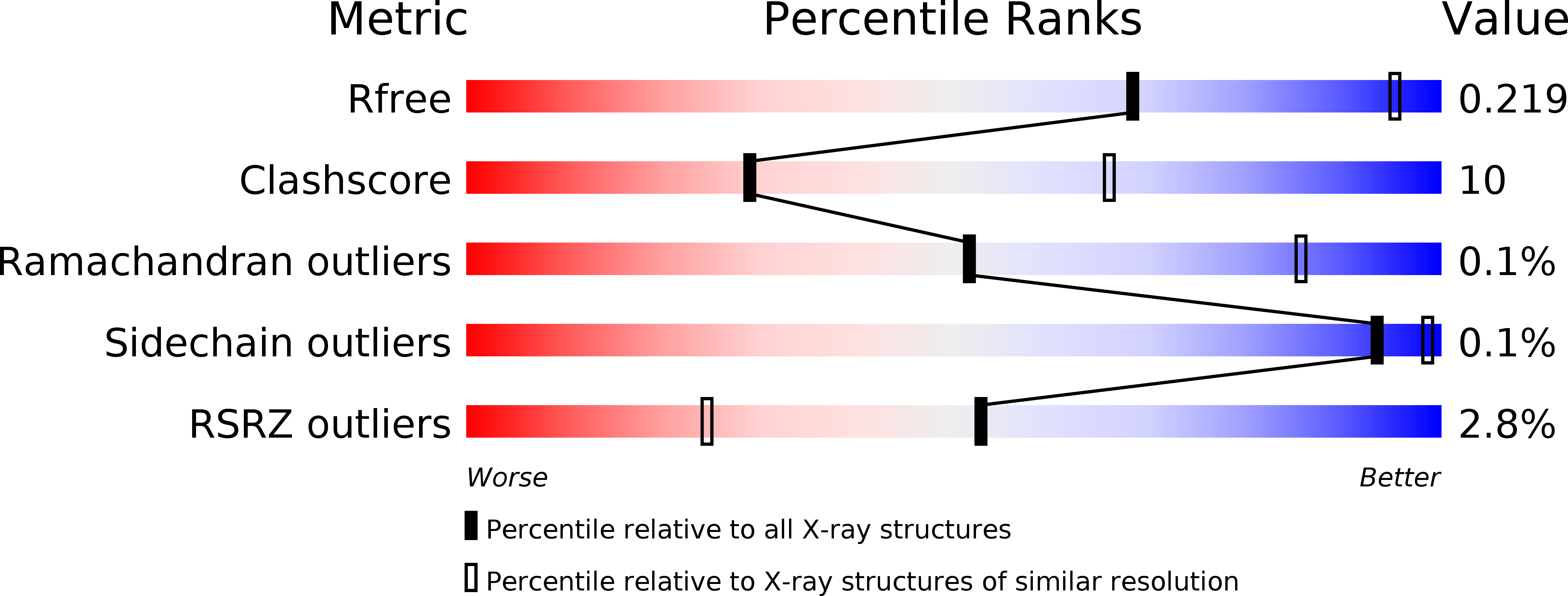Structural Basis for the Specific Neutralization of Stx2a with a Camelid Single Domain Antibody Fragment.
Bernedo-Navarro, R.A., Romao, E., Yano, T., Pinto, J., De Greve, H., Sterckx, Y.G., Muyldermans, S.(2018) Toxins (Basel) 10
- PubMed: 29494518
- DOI: https://doi.org/10.3390/toxins10030108
- Primary Citation of Related Structures:
6FE4 - PubMed Abstract:
Shiga toxin-producing Escherichia coli (STEC) are a subset of pathogens leading to illnesses such as diarrhea, hemolytic uremic syndrome and even death. The Shiga toxins are the main virulence factors and divided in two groups: Stx1 and Stx2, of which the latter is more frequently associated with severe pathologies in humans. An immune library of nanobodies (Nbs) was constructed after immunizing an alpaca with recombinant Shiga toxin-2a B subunit (rStx2aB), to retrieve multiple rStx2aB-specific Nbs. The specificity of five Nbs towards rStx2aB was confirmed in ELISA and Western blot. Nb113 had the highest affinity (9.6 nM) and its bivalent construct exhibited a 100-fold higher functional affinity. The structure of the Nb113 in complex with rStx2aB was determined via X-ray crystallography. The crystal structure of the Nb113-rStx2aB complex revealed that five copies of Nb113 bind to the rStx2aB pentamer and that the Nb113 epitope overlaps with the Gb3 binding site, thereby providing a structural basis for the neutralization of Stx2a by Nb113 that was observed on Vero cells. Finally, the tandem-repeated, bivalent Nb113₂ exhibits a higher toxin neutralization capacity compared to monovalent Nb113. The Nb of highest affinity for rStx2aB is also the best Stx2a and Stx2c toxin neutralizing Nb, especially in a bivalent format. This lead Nb neutralizes Stx2a by competing for the Gb3 receptor. The fusion of the bivalent Nb113₂ with a serum albumin specific Nb is expected to combine high toxin neutralization potential with prolonged blood circulation.
Organizational Affiliation:
Laboratory of Bacterial Genetics, Institute of Biology, University of Campinas (UNICAMP), São Paulo 13083-862, Brazil. alvinbn@gmail.com.















